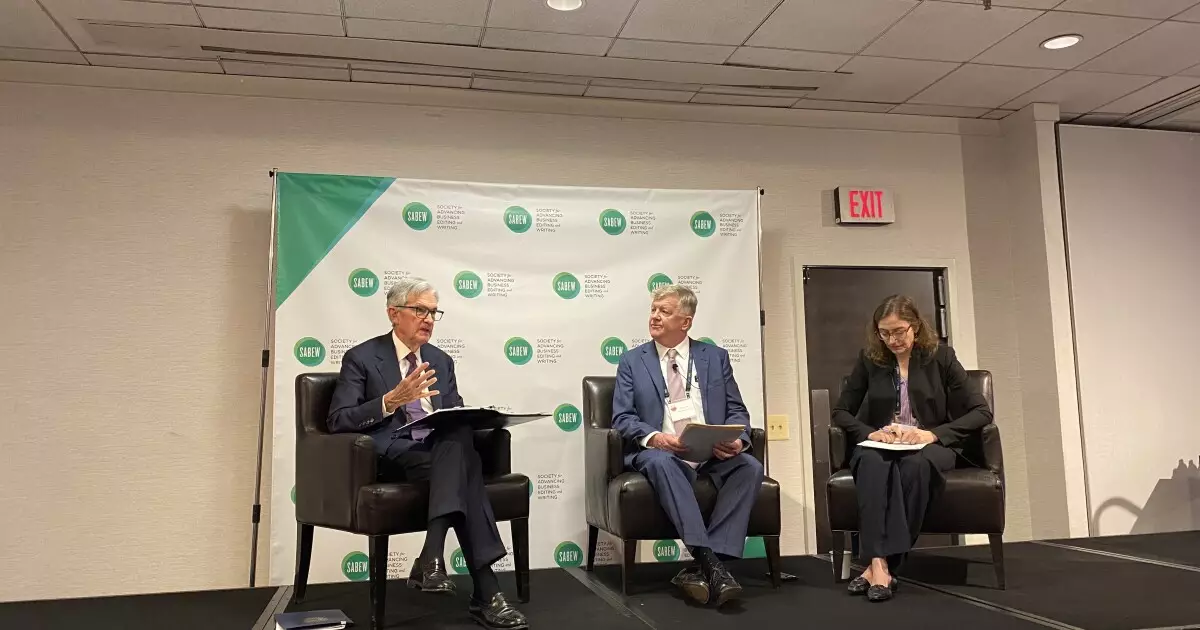The actions taken by the Trump administration regarding tariffs, immigration, and government expenditure are no trivial matters; they represent a seismic shift in how the U.S. interacts with the global economy. Jerome Powell, the chair of the Federal Reserve, has suggested a prudent approach in responding to these changes, underscoring a wait-and-see strategy aimed at better understanding how these policies will impact economic indicators in the near future. However, there’s an unsettling feeling that the long-term consequences may not be as benign as the Fed might hope.
There’s a prevailing notion among economists that policy decisions should stimulate positive economic progress. However, Rampant tariffs have the unfortunate potential to stifle this very progress. If Trump’s tariffs indeed turn out to be more severe than anticipated, as Powell warned, the burden on American consumers and companies could be devastating. The question looms large: Are we on the brink of a self-inflicted economic disaster?
The Fed’s Balancing Act
Powell’s remarks indicate that the Federal Reserve remains focused on maintaining price stability and maximum employment, but such an objective becomes increasingly challenging in a landscape of tariff-induced inflation. While inflation rates have stabilized, the elevated prices consumers face are nothing short of a fact. Despite Powell’s assurances of a “good place,” when prices remain high and wages do not catch up, consumer confidence tends to wane. The labor market may remain balanced for now, with companies adding jobs, but it’s imperative to note that the consumer’s most significant contribution to economic growth is on shaky ground.
It’s quite unsettling for a central bank to operate under a dual mandate that seems more precarious than ever. Even if employment numbers look favorable, consumer sentiment, looped into the tangles of rising costs and limited buying power, should give us pause. The optimism projected by Powell must contend with the stark reality that households are tightening their belts as uncertainty looms.
Consumer Sentiment: A Fragile Foundation
The Fed Chair’s assertion that consumer spending is resilient is somewhat of a double-edged sword. Yes, consumers have shown an incredible ability to keep spending even amid adversity, much like during the pandemic. However, this begs the question: are consumers acting out of resilience or desperation? Continuous spending amid rising prices could be interpreted as a signal of either enduring optimism or simply a lack of alternatives.
It is troubling to think that, rather than benefiting from healthy economic conditions, many Americans are resorting to maintaining their spending habits out of necessity—an act of economic survival. The sentiment expressed by Powell—that “inflation has moderated”—rings hollow in a climate where prices remain stubbornly high, thus pressuring consumers’ financial well-being.
The Stagflation Debate
Powell vehemently rejects comparisons to the 1970s era of stagflation, insisting that we aren’t witnessing similar conditions now. Yet, he fails to acknowledge that the potential for stagnation alongside inflation is very real given our current trajectory. Reduced consumer confidence, elevated living costs, and government policy-induced economic constraints create a perfect storm for stagnation. Ignoring the signs could lead to economic backwardness masquerading as growth.
The complexities of modern economics shouldn’t be glossed over by a simple narrative of resilience. Instead, we should be questioning whether the Fed’s optimistic outlook is not just an illusion constructed from inadequate data analysis. In a time where the stakes are higher than they seemed just months prior, the cost of inaction in addressing these inherent economic risks could have lasting implications.
A Call for Insight over Ideology
Finally, one cannot help but note the current Federal Reserve’s insistence on nonpartisanship in their rhetoric, especially embodied in Powell’s choice of his purple necktie—a garment that straddles blue and red. While it’s handy for the Fed to present itself as above the fray of politics, the palpable shifts in policy necessitate a more forceful commentary on the influences of economic decision-making. The consequences of tariffs and spending changes do not occur in a vacuum, and it is time for the Federal Reserve to engage critically with these realities.
The economic path carved by the Trump administration may be fraught with challenges, necessitating a re-evaluation of existing policies in favor of strategies promoting resilience, growth, and consumer stability.

